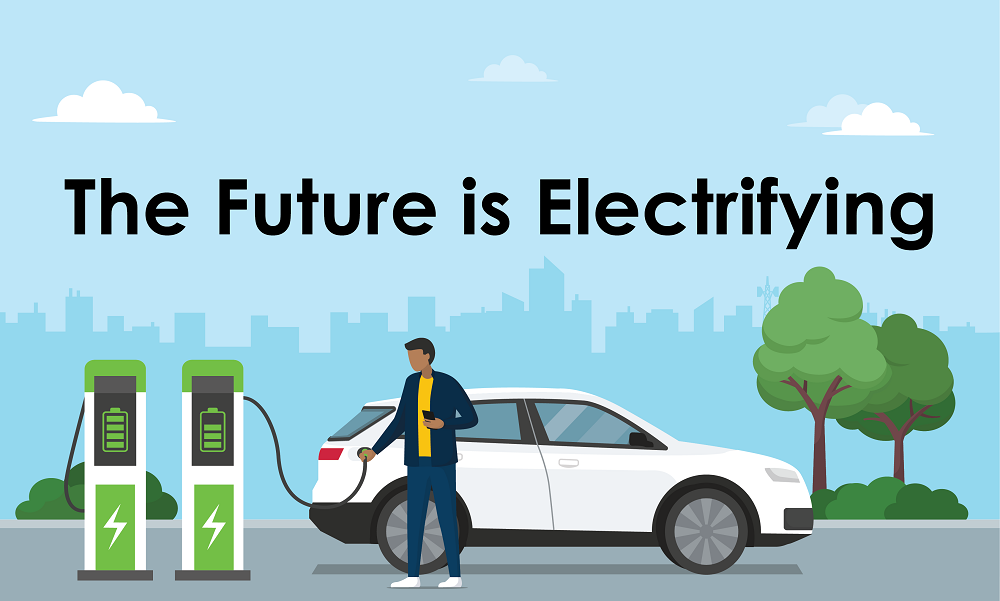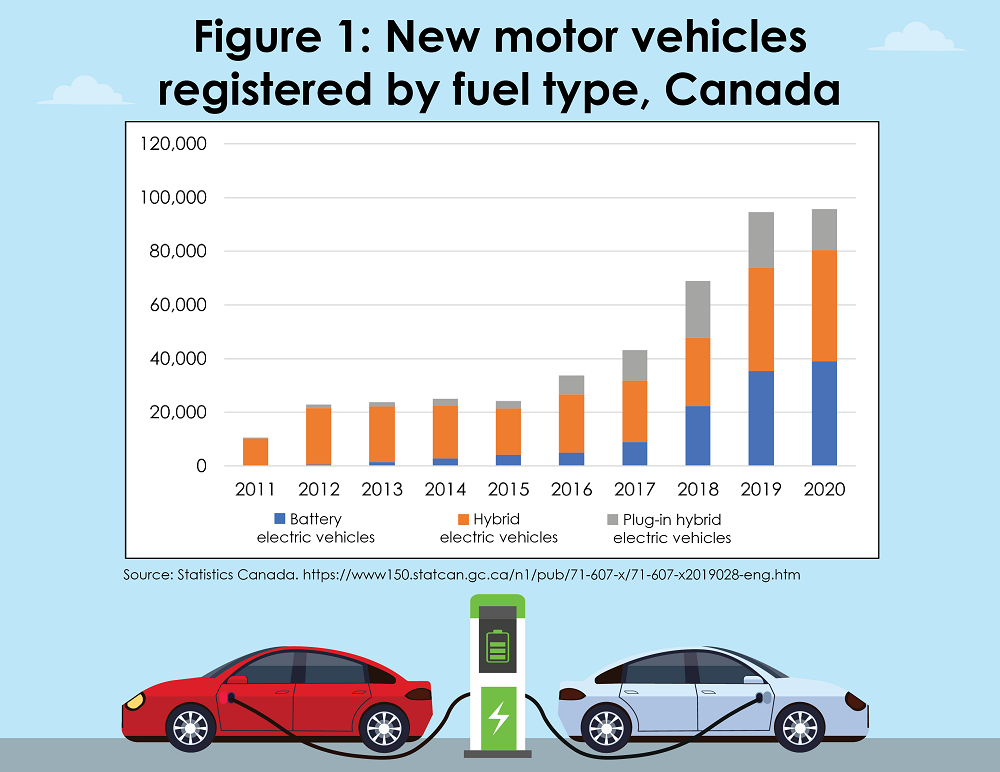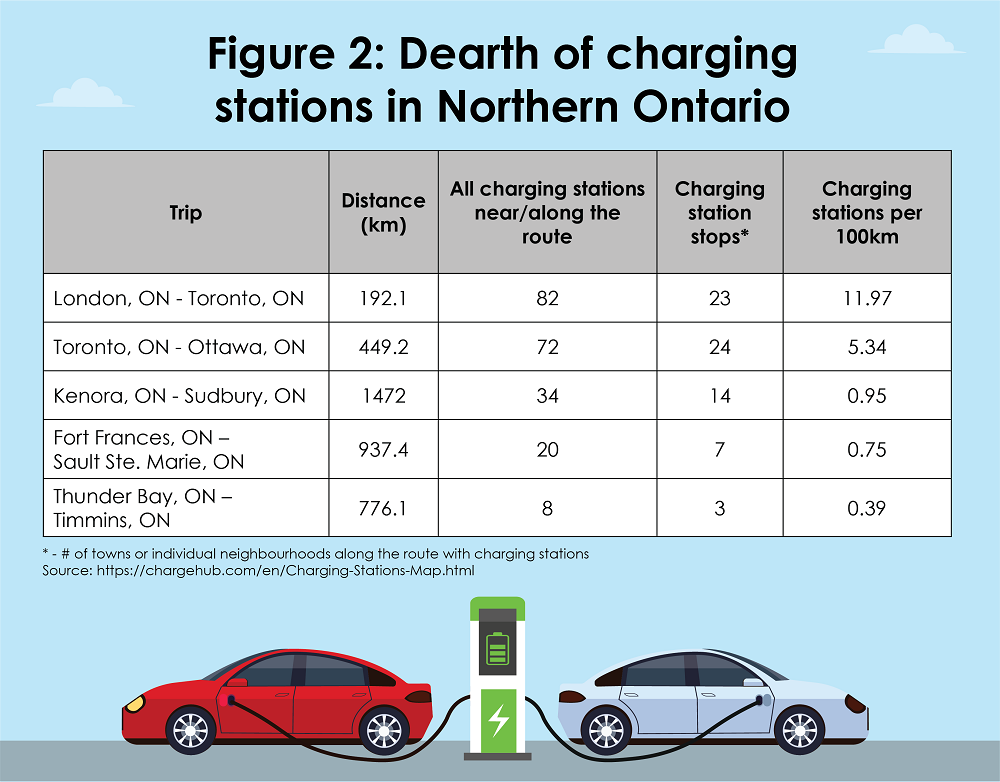The Future is Electrifying
August 4, 2021 - This article first appeared in The Walleye Magazine, August issue.

“Can I borrow your car charger?” will soon have a very different meaning. Electric and hybrid vehicles are rising in popularity across Canada. Gasoline- and diesel-fueled vehicles are still the most popular choice on the market, but alternative fuel options are slowly starting to gain popularity. This adoption will accelerate as we move towards the federal government’s target of having all new light-duty vehicles be zero-emission by 2035.
In fact, 8,158 new BEV (Battery electric vehicles) were registered in Ontario in 2020. In addition to solely battery powered vehicles, 19,164 hybrid type vehicles were registered in Ontario as well.

Committing to a different fuel type isn’t as easy as just buying the car. Now you have to figure out how to charge it, how far you can go between charges and how the cold weather impacts your range. Is Northwestern Ontario ready for an electric future?
Looking at the current public electric charging infrastructure, there are a handful of charging stations scattered across Northwestern Ontario. In total, there are 18 Level 3 charging stations and 16 Level 2 chargers. Level 2 chargers generally take 5 to 11 hours to get an EV charged for from 200-400Kms. A Level 3 charger can get the same distance in 30-60 minutes. Not all electric vehicles, however, are compatible with Level 3 chargers.
Looking at the existing stations in Northwestern Ontario, larger communities such as Thunder Bay, Kenora and Dryden have a handful of stations. There are also a few smaller communities along the major travel routes that have stations as well, such as Fort Frances, Nipigon, Terrace Bay, Marathon, Atikokan, Upsala, Ignace, and Geraldton.
The list sounds like there are more than enough charging stations to go around, but can you get from one community to another on a single charge? The answer right now is, well, it depends. if the conditions are right. Some hybrid vehicles can travel up to 600 km on a single tank of gas. SO they are in good shape. A typical electric car can travel between 300-400 km in a single charge. A single charge is more than enough to get you from Atikokan to Thunder Bay. Journeys such as Thunder Bay to Dryden, are cutting it close, but at least you can take a battery pit stop in Ignace or Upsala along the route if needed (and your vehicle is compatible with a Level 3 station). The biggest issue with electric vehicles in Northwestern Ontario is getting from Geraldton to Hearst. There are no charging stations in between, forcing electric vehicle owners to travel along Highway 17 instead if they need to travel to Northeastern Ontario where there are stations almost every 200 km.

The advertised battery range estimates are when you operate the car in ideal conditions, but what about the other nine months of the year when the weather is cooler and the world is covered in white snow? Cold weather is said to impact an electric vehicle’s battery range, in some cases by 50 per cent. Now that trip between Atikokan and Thunder Bay is looking a lot longer than just 200 km.
Another issue that will plague electric vehicle owners is highway closures and detours. If the highway is closed between Longlac and Nipigon, vehicles in Longlac have no place to charge until the highway re-opens and they can get to Geraldton.
Is Northwestern Ontario ready for an electric future? Not yet. But we are moving in the right direction. Investments in infrastructure are still needed to ensure that we can keep up to the rest of the country while we wait for winter battery technology to improve. More charging stations, especially along the Highway 11 corridor, and improved highway safety to limit road closures are good places to start.
Evelynn Hoffman
Write for us
The content of Northern Policy Institute’s blog is for general information and use. The views expressed in this blog are those of the author and do not necessarily reflect the opinions of Northern Policy Institute, its Board of Directors or its supporters. The authors take full responsibility for the accuracy and completeness of their respective blog posts. Northern Policy Institute will not be liable for any errors or omissions in this information, nor will Northern Policy Institute be liable for any detriment caused from the display or use of this information. Any links to other websites do not imply endorsement, nor is Northern Policy Institute responsible for the content of the linked websites.
Northern Policy Institute welcomes your feedback and comments. Please keep comments to under 500 words. Any submission that uses profane, derogatory, hateful, or threatening language will not be posted. Please keep your comments on topic and relevant to the subject matter presented in the blog. If you are presenting a rebuttal or counter-argument, please provide your evidence and sources. Northern Policy Institute reserves the right to deny any comments or feedback submitted to www.northernpolicy.ca that do not adhere to these guidelines.
